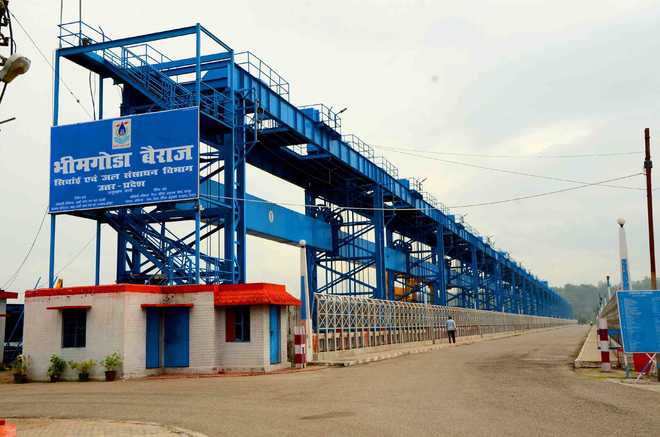Malviya led first anti-dam movement 100 years ago
Sandeep Rawat
Tribune News Service
Haridwar, July 14
Chief Minister Harish Rawat inaugurated a renovated Ganga ghat in the name of Bharat Ratna Pt Madan Mohan Malviya in Haridwar two days ago. Interestingly, exactly 100 years ago in 1916, Malviya had led a historic anti-dam movement in Haridwar, which is also referred to as the first anti-dam movement in the world.
The British were forced to withdraw the project of constructing a dam at Bhimgoda, opposite Brahma Kund, Har-ki-Pauri.
Noted Vedic exponent and historian Pt Vishnu Dutt Rakesh says in 1914, the British had envisaged building a dam near Bhimgoda so that the water flow in the Ganga mainstream, which is called Neel Dhara in local parlance, could be controlled. But mass resentment surfaced when local teerth purohits, saints and people came to know about the proposal.
Teerth purohits feared that if the hydropower project was constructed, the Ganga would be confined to the dam reservoir, affecting its sanctity and purity.
The British undeterred by opposition by teerth purohits went ahead with designing and other modalities related with the project. At this juncture, teerth purohits appealed to Malviya and conveyed their concerns about the project. Soon, Malviya arrived in Haridwar and took the rein of the anti-dam movement. He stopped the field observation and assessment work by British engineers and surveyors.
“But as the British were adamant to construct the dam at that very site, Malviya sent a communiqué to several dynasty rulers, including of Jaipur, Darbhanga, Kasim Bazaar, Alwar and Calcutta. Many public representatives, former bureaucrats, freedom fighters, academicians and Ganga activists also lent their support to the anti-dam movement,” says Vishnu.
Another local historian and journalist Kaushal Shikhola says in November 1916, the British decided to construct a dam at Bhimgoda after a two-year hiatus. Malviya called on Hindu rulers to arrive in Haridwar to save the Ganga from getting confined to concrete walls.
“As many as 32 dyanstic rulers along with their armies arrived in Haridwar on Malviya’s call. That was the time when Bhimgoda was a densely forested terrain but still thousands of soldiers with elephants, camels and guns fortified Bhimgoda to oppose the British project. Seeing mass resentment and unified dynasties coming for a social and religious cause, the British government invited Malviya to hold talks with the then Governor General Hastings. The British after listening to the reasons and concerns of teerth purohits decided to give up the ambitious dam project on the Ganga in Haridwar,” says Shikola.
A written agreement was signed between the British government and teerth purohits led by Malviya. It was stated in the agreement that the dam project was being shelved forever and 1,000 cusecs of unhindered water flow with a minimum of 5 foot level at Har-Ki-Pauri would be ensured.
Also, a stream was released from the main Ganga course from Bhimgoda, which still passes towards Har-ki-Pauri, which, according to the agreement, would flow forever. Later a small barrage was made at Laljiwala, a few hundred metres away from the Bhimgoda site,from where water to the Ganga Canal is diverted.
It was a historic movement led by Malviya, who founded Rishikul Vidyapeeth in Haridwar and Banaras Hindu University at Varanasi. The Ganga Sabha, which manages the affairs of Brahma Kund, Har-ki-Pauri, was also formed after the incident in 1916.









